UK housing market review and outlook for 2024

housing market: The UK housing market, an intricate tapestry woven with economic threads, societal shifts, and policy nuances, stands as a pivotal element in the nation’s economic framework. As we peer into the horizon of 2024, a meticulous examination of the current state, coupled with a forward-looking perspective, is not just insightful but imperative for those vested in real estate, finance, and the broader economic landscape. Current Trends in the UK Housing Market: 1. Price Dynamics and Market Resilience: The rhythm of the UK housing market echoes a persistent melody of price growth. According to the authoritative voices of the Office for National Statistics (ONS) and the UK House Price Index, average house prices continue their upward trajectory. This resilient growth, however, conceals a story of regional variations and localized dynamics, urging a closer inspection into the microcosms of the market. Official Links: 2. Post-Pandemic Paradigm Shift: The global upheaval caused by the pandemic has cast a transformative spell on housing preferences. Remote work has unraveled the traditional ties to urban hubs, prompting an exodus to suburban and rural abodes. This metamorphosis in lifestyle choices holds implications not just for the immediate future but also for the long-term configuration of the housing market. Factors Influencing the Housing Market: 1. Economic Alchemy: The alchemy of the housing market intricately intertwines with the broader economic landscape. A nuanced understanding of GDP growth, inflation rates, and employment levels is paramount for deciphering the market’s pulse. Economic indicators serve as the North Star guiding market players through the labyrinth of housing dynamics. 2. Government Policies as Market Conductors: The housing market dances to the tunes of government policies. Initiatives to stimulate housing supply, foster homeownership, and regulate the rental sector wield substantial influence. The symphony of market movements is often conducted by the policies emanating from the official government website, making it an indispensable resource for those seeking a comprehensive understanding. 3. Interest Rates: The Market’s Heartbeat: At the heart of the market lies the rhythm of interest rates orchestrated by the Bank of England. Changes in these rates orchestrate a complex symphony, impacting mortgage affordability, demand dynamics, and overall market sentiment. Monitoring the tempo of these decisions is akin to tuning into the market’s heartbeat. Outlook for 2024: 1. Continued Crescendo of Prices: The melody of rising property prices is expected to crescendo into 2024. Factors such as constrained housing supply, persistently low interest rates, and sustained buyer demand compose the musical notes of this symphony. However, the tempo might vary across regions, creating a diverse and nuanced market landscape. 2. Regional Overtures: Within this symphony, regional variations play distinct notes. Certain areas, blessed with robust employment opportunities, infrastructure development, and enhanced connectivity, may experience a more pronounced crescendo in demand. Understanding these regional overtures is vital for market participants seeking to fine-tune their strategies. 3. Technological Harmony: The real estate industry is undergoing a technological metamorphosis, harmonizing traditional practices with innovative trends. Virtual tours, blockchain integration in property transactions, and other proptech innovations are weaving themselves into the fabric of the market. Staying attuned to these technological harmonies is imperative for those aspiring to achieve success in the industry. 4. Sustainability and ESG in the Spotlight: Environmental, Social, and Governance (ESG) considerations are casting a spotlight on the housing market. The embrace of sustainable and energy-efficient properties aligns with a broader societal shift towards responsible practices. As the market evolves, those attuned to these ESG considerations are likely to find themselves in tune with the changing preferences of a discerning clientele. Conclusion: In the symphony of the UK housing market, 2024 promises to be a chapter marked by complexity, dynamism, and opportunity. Navigating this multifaceted composition requires more than just a glance at the musical score; it demands a comprehensive understanding of the notes, pauses, and crescendos that collectively create the market’s melody. As we traverse this melodic landscape, stakeholders in the housing market are encouraged not merely to listen but to interpret, adapt, and compose their strategies in harmony with the evolving tapestry of the UK housing market in 2024. Stay attuned, explore the nuances, and let the symphony guide you through the dynamic rhythms of real estate. Guide To Vehicle Tax Rates In The UK 2024
VAT guide (VAT Notice 700)

VAT Notice 700: Value Added Tax (VAT) is a consumption tax that is levied on the value added to goods and services at each stage of production and distribution. In the United Kingdom, VAT is a crucial component of the tax system, contributing significantly to government revenue. To ensure businesses and individuals understand their obligations and rights related to VAT, Her Majesty’s Revenue and Customs (HMRC) has provided a comprehensive guide known as VAT Notice 700. In this blog post, we will delve into the key aspects covered in VAT Notice 700, providing a detailed overview with official links for further reference. What is VAT? Value Added Tax is a tax on consumer spending. It is collected in stages, with each business in the supply chain responsible for reporting and remitting the tax to HMRC. VAT is applied to the sale of goods and services, both tangible and intangible, and it is ultimately borne by the end consumer. Official Link: VAT Notice 700 VAT Registration One of the fundamental aspects covered in VAT Notice 700 is the process of VAT registration. Businesses that exceed the annual turnover threshold must register for VAT. The registration process is explained in detail, including the necessary forms and documentation. Official Link: VAT registration – How to register for VAT VAT Rates and When to Charge VAT rates can vary depending on the type of goods or services provided. Notice 700 outlines the standard rate, reduced rate, and zero-rate categories, along with guidance on when to charge each rate. This section is crucial for businesses to ensure they are applying the correct VAT rates. Official Link: VAT rates on different goods and services Making Tax Digital (MTD) for VAT As part of HMRC’s digital transformation, Making Tax Digital (MTD) for VAT has been introduced. This section of VAT Notice 700 explains the MTD requirements, including digital record-keeping and filing VAT returns using compatible software. Official Link: Making Tax Digital for VAT VAT Returns and Payments VAT-registered businesses are required to submit regular VAT returns to HMRC, detailing their output and input tax. The guide provides a step-by-step explanation of how to complete VAT returns and when payments are due. Official Link: VAT Returns Special VAT Schemes VAT Notice 700 also covers various special schemes designed to simplify VAT accounting for specific types of businesses. These schemes include the Flat Rate Scheme, Annual Accounting Scheme, and Cash Accounting Scheme. Official Link: VAT special schemes Import and Export of Goods and Services For businesses involved in international trade, the guide offers comprehensive information on the VAT implications of importing and exporting goods and services. This includes guidance on how to account for VAT on cross-border transactions. Official Link: VAT on goods VAT Inspections and Record-Keeping VAT-registered businesses are subject to inspections by HMRC to ensure compliance. The guide outlines the rights and responsibilities of businesses during inspections and provides guidance on maintaining accurate VAT records. Official Link: VAT inspections and visits Conclusion In conclusion, VAT Notice 700 serves as a vital resource for businesses and individuals navigating the complexities of VAT in the UK. The guide covers a wide range of topics, from registration to special schemes, making it an indispensable tool for ensuring compliance with HMRC regulations. By referring to the official links provided in this blog post, readers can access the most up-to-date and accurate information to guide them through their VAT obligations. Remember, staying informed and proactively managing VAT responsibilities is key to avoiding penalties and maintaining a smooth and compliant business operation. Disclaimer: The information provided in this blog post is based on the knowledge available as of the cutoff date in January 2022. For the latest updates and changes, readers are encouraged to visit the official HMRC website and consult with professional advisors. ALSO READ Business Profit Tax Changes In The UK For 2023-24 Value Added Tax Helpline Office In 2024
VAT on Flights in the UK 2024
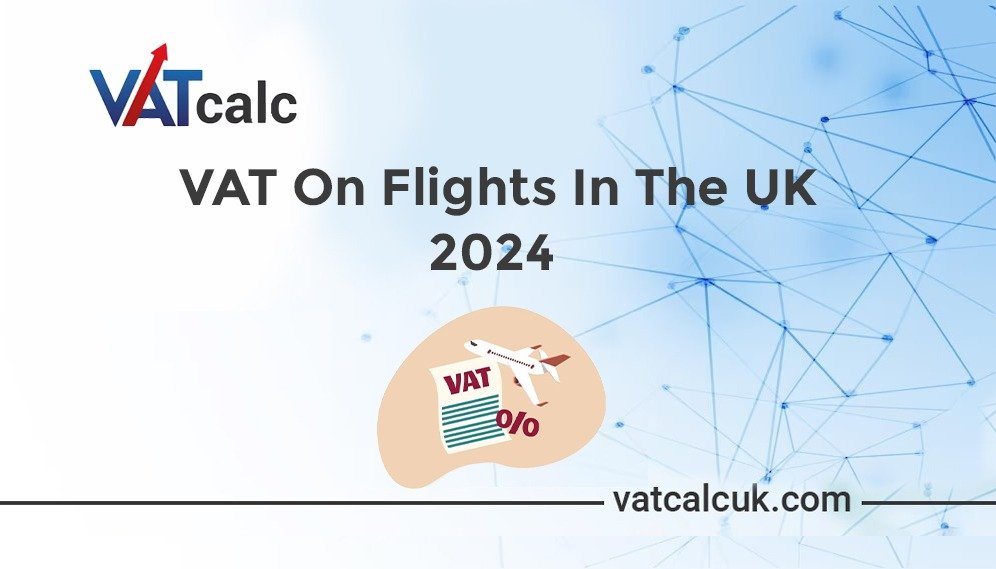
VAT on Flights: In the dynamic landscape of aviation and taxation, one topic that consistently captures the attention of travelers and industry stakeholders alike is Value Added Tax (VAT) on flights. As we enter the year 2024, it becomes imperative to unravel the complexities surrounding VAT on flights in the United Kingdom. This comprehensive guide aims to provide a detailed understanding of the current VAT regulations, their implications, and how they may impact both consumers and the aviation industry. Understanding VAT: Value Added Tax, commonly known as VAT, is a consumption tax imposed on goods and services. It is a way for governments to generate revenue by taxing the value added at each stage of the production and distribution chain. In the context of flights, VAT is a key consideration that affects both airlines and passengers. VAT on Flights: An Overview: As of the latest information available, VAT on flights in the UK remains a subject of interest and debate. The government periodically reviews and updates tax policies, and understanding the current status is crucial for travelers and industry players alike. The official website of Her Majesty’s Revenue and Customs (HMRC) provides detailed information on VAT regulations in the UK. Readers can access the latest updates and official documentation by visiting the HMRC website. Implications for Airlines: Airlines operating in the UK are subject to VAT on various aspects of their operations. This includes not only the sale of tickets but also other services provided to passengers. Understanding the tax implications is essential for airlines to remain compliant and to factor in these costs in their financial planning. The Civil Aviation Authority (CAA), the regulatory body for the aviation industry in the UK, plays a significant role in overseeing compliance with various regulations, including taxation. Readers are encouraged to visit the official CAA website for the latest guidelines and regulatory updates. VAT and Ticket Pricing: One of the most direct ways consumers feel the impact of VAT on flights is through ticket pricing. The inclusion or exclusion of VAT can significantly affect the overall cost of air travel. Travelers often find themselves grappling with the complexity of fare structures, and understanding how VAT is applied is crucial for making informed decisions. The official website of the UK government is a valuable resource for consumers seeking information on their rights and obligations. Navigating through the consumer section will provide insights into how VAT affects ticket pricing and what rights passengers have in terms of transparent pricing. VAT Exemptions and Special Cases: While VAT is a standard component of most goods and services, there are instances where exemptions or special rules apply. These exemptions may vary based on factors such as the type of flight, the destination, or the passenger’s status. Delving into the specifics of these exemptions is essential for both travelers and industry professionals. The official publications from the UK government’s Treasury Department provide in-depth information on tax policies, including any exemptions related to aviation. Interested readers can explore the official Treasury website for detailed documentation. International Considerations: The aviation industry is inherently global, and international flights add a layer of complexity to the application of VAT. Understanding how VAT is applied to flights that cross borders is crucial for airlines and passengers alike. The International Air Transport Association (IATA) is a global trade association that represents the interests of airlines worldwide. Their website offers resources and insights into international aviation regulations, including the taxation of flights. Future Trends and Policy Changes: As we step into 2024, the landscape of VAT on flights may witness changes based on government policies, economic factors, and global events. Staying abreast of these developments is essential for all stakeholders in the aviation sector. The official website of the UK Parliament provides access to debates, discussions, and proposed legislation. Monitoring these sources can provide a glimpse into the potential changes in VAT regulations and their implications for the aviation industry. Conclusion: In conclusion, VAT on flights in the UK is a multifaceted topic that requires a nuanced understanding of tax regulations, industry dynamics, and consumer rights. Navigating the skies involves more than just boarding a plane – it requires a comprehensive understanding of the financial implications associated with air travel. Whether you are a frequent flyer, an industry professional, or a policymaker, staying informed is the key to making informed decisions and contributing to the ongoing dialogue surrounding VAT on flights. By utilizing the official websites mentioned in this guide, readers can access accurate and up-to-date information to navigate the complexities of VAT on flights in the UK in 2024. ALSO READ VAT Cash Accounting Scheme 2023 VAT Annual Accounting Scheme 2023
Guide to Vehicle Tax Rates in the UK 2024

Vehicle Tax Rates 2024: In the ever-evolving landscape of vehicles taxation, staying informed about the latest rates is crucial for every vehicle owner in the United Kingdom. As we step into 2024, the government has introduced several changes to the vehicles tax structure, impacting both individual car owners and businesses with vehicle fleets. In this comprehensive guide, we’ll explore the intricacies of the UK’s vehicles tax system, shedding light on the latest rates and regulations. Understanding Vehicles Tax in the UK: Before delving into the specifics of the 2024 vehicles tax rates, it’s essential to understand the overarching principles of vehicles taxation in the UK. The vehicles tax, also known as Vehicle Excise Duty (VED) or road tax, is a mandatory fee levied on all vehicles using public roads. The funds generated from VED contribute to the maintenance and development of the road infrastructure across the country. Official Resources for Vehicle Tax Information: To ensure accuracy and reliability, it’s crucial to refer to official government websites for the latest information on vehicle tax rates. The following are key online resources where vehicle owners can find up-to-date information on tax rates, regulations, and any recent changes: 2024 Vehicle Tax Rates Breakdown: Now, let’s delve into the specific vehicle tax rates for 2024. It’s important to note that these rates are subject to change based on government policies and environmental considerations. For the most accurate and current information, always refer to the official resources mentioned above. Conclusion: Staying informed about the latest vehicle tax rates is not only a legal obligation but also a financial necessity for vehicle owners in the UK. By regularly checking official government websites and understanding the specific rates for different vehicle types, individuals and businesses can navigate the road ahead with confidence. As we progress through 2024, it’s advisable to stay vigilant for any updates or changes to the vehicle tax landscape, ensuring compliance with the latest regulations. Remember, the information provided in this guide serves as a general overview, and for the most accurate and current details, always refer to the official government resources mentioned earlier. Safe travels on the roads of the United Kingdom! Also Read VAT Retail Scheme 2023 Business Non-Business Supplies For VAT VAT On Food And Drinks
Business Profit Tax Changes in the UK for 2023-24
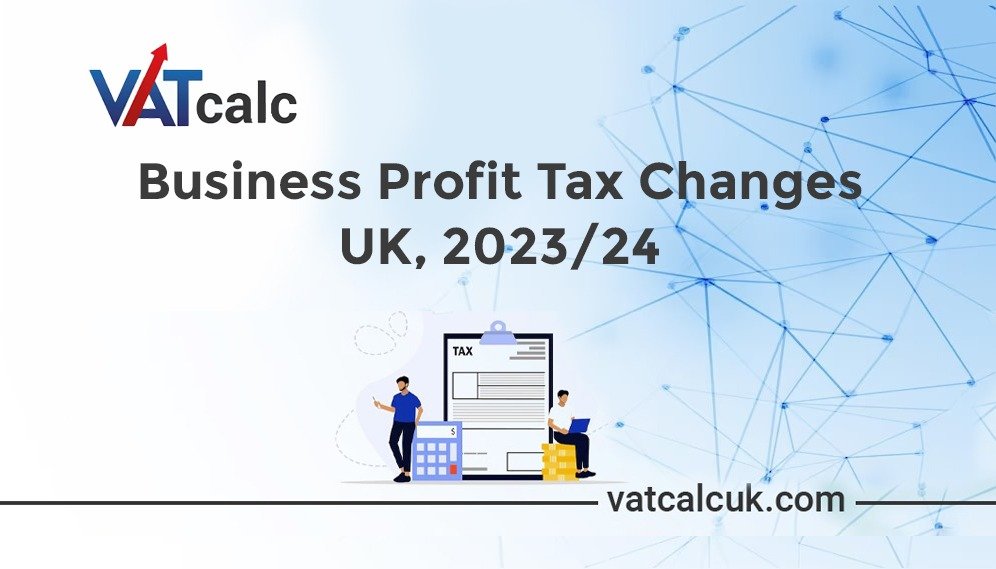
Business Profit Tax Changes: The economic landscape is ever-evolving, and businesses need to stay ahead of the curve to ensure sustained growth and profitability. In the United Kingdom, the fiscal year 2023-24 brings about significant changes to the business profit tax landscape, particularly concerning the Basis Period. In this comprehensive guide, we will explore the intricacies of these changes, their implications for businesses, and strategies to navigate through these shifts successfully. Understanding Basis Period in Business Profit Tax: The Basis Period is a fundamental concept in UK tax regulations, determining the period of business profits subject to taxation. The upcoming changes in 2023-24 have the potential to impact businesses of all sizes and industries. To comprehend the nuances of these changes, let’s delve into the key aspects: Navigating the Changes Effectively: Given the complexity of these tax changes, businesses need to adopt proactive strategies to navigate through them successfully. Here are some key considerations and recommended approaches: Conclusion The forthcoming changes to the Basis Period in UK business profit tax for 2023-24 may pose challenges, but with careful planning and strategic implementation, businesses can turn these challenges into opportunities. Staying informed, seeking professional advice, and embracing innovative solutions will be key in adapting to the evolving fiscal landscape. To further enhance your understanding of these changes, here are some recommended articles and blog posts from reputable sources: In conclusion, embracing change is crucial for business sustainability. By staying informed, planning strategically, and utilizing available resources, businesses can not only navigate the Basis Period changes but also position themselves for long-term success in the dynamic UK business landscape. Value Added Tax Helpline Office In 2024
Value Added Tax Helpline Office in 2024
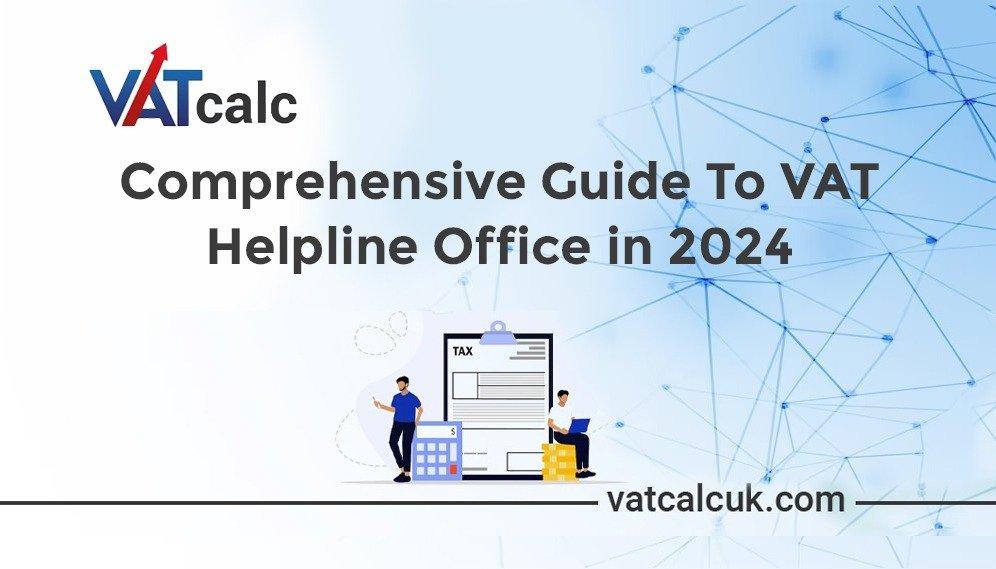
VAT Helpline Office in 2024: In the intricate tapestry of the United Kingdom’s tax system, the Value Added Tax (VAT) stands as a crucial component. As businesses and individuals grapple with the complexities of VAT, having access to reliable information and assistance becomes paramount. In 2024, the UK will play a central role in providing guidance and support. In this comprehensive guide, we will delve into the intricacies of VAT, explore the functions of the VAT(Value Added Tax) Helpline Office, and provide valuable insights to help businesses and individuals navigate the ever-evolving tax landscape. Understanding Value Added Tax (VAT): Value Added Tax is a consumption tax levied on goods and services at each stage of production and distribution. It is a multi-stage tax that ultimately falls on the final consumer. VAT is a significant source of revenue for the UK government, and its proper administration is crucial for a well-functioning economy. For businesses engaged in the supply of goods and services, understanding VAT is imperative. Different VAT rates apply to various goods and services, and compliance with VAT regulations is essential to avoid penalties and legal complications. VAT(Value Added Tax) Helpline Office in 2024: The VAT(Value Added Tax) Helpline Office serves as a vital resource for businesses and individuals seeking guidance on VAT-related matters. Whether it’s understanding VAT registration, filing returns, or seeking clarification on specific transactions, the helpline office plays a pivotal role in providing accurate and timely information. Key Functions of the VAT(Value Added Tax) Helpline Office: Navigating VAT Challenges: While the VAT(Value Added Tax) Helpline Office provides valuable support, businesses must also be proactive in managing VAT challenges. Common issues include: Strategies for Effective VAT Management: To navigate the complexities of VAT successfully, businesses can implement the following strategies: Conclusion: In conclusion, the VAT(Value Added Tax) Helpline Office in the UK serves as a crucial resource for businesses and individuals navigating the complexities of Value Added Tax. By understanding the functions of the helpline, staying informed about VAT regulations, and implementing effective strategies for VAT management, businesses can ensure compliance and contribute to a robust and stable economic environment. As we move forward into 2024, the dynamic nature of tax laws necessitates continuous learning and adaptation. The VAT(Value Added Tax) Helpline Office remains a steadfast partner in this journey, providing the support and guidance needed to thrive in the intricate landscape of VAT in the United Kingdom. ALSO READ Global 2024 VAT / GST Changes 2024 VAT Changes: The Law Has Been Published!
Global 2024 VAT / GST changes
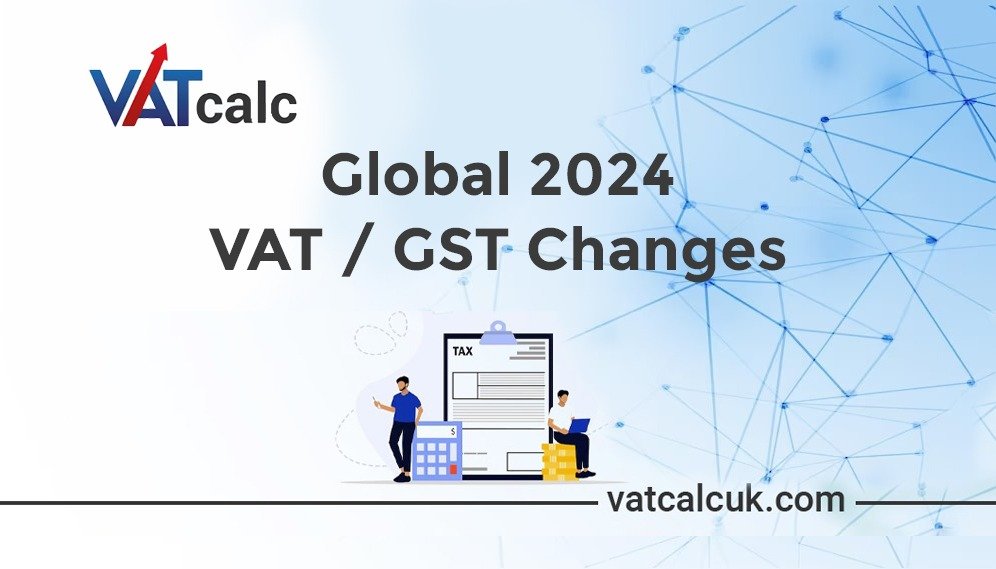
Navigating the Global Economic Horizon: An Extensive Exploration of Anticipated VAT/GST Changes in 2024 In the intricate dance of global economics, the role of Value Added Tax (VAT) and Goods and Services Tax cannot be overstated. As we stand on the threshold of 2024, the landscape of VAT/GST is poised for significant changes that will reverberate across borders, impacting businesses, consumers, and the international economic tapestry. This extended blog post aims to provide an in-depth exploration of the anticipated VAT/GST changes in 2024, delving into the intricacies of these modifications and their far-reaching implications. Foundation of Understanding: Revisiting VAT/GST Basics Before exploring anticipated changes, let’s establish a solid foundation by revisiting the fundamental concepts of Value Added Tax (VAT) and Goods and Services Tax. Both VAT and GST are consumption taxes applied at different stages of the production and distribution chain. They are designed to capture the value added to goods and services at each stage, ensuring a comprehensive taxation framework. The Global Dynamics of VAT/GST: A Diverse Landscape The global economy operates within a framework of diverse VAT/GST systems, with each country wielding its own set of rules, regulations, and compliance requirements. This diversity poses a perpetual challenge for businesses engaged in cross-border transactions, necessitating a nuanced understanding of varying tax structures. As we look ahead to 2024, the evolving dynamics of these systems will shape the future of international business operations. Anticipated Changes in 2024: An In-Depth Analysis 1. Harmonization Efforts: Streamlining Global Tax Frameworks One of the foremost trends expected in 2024 is a continued push for harmonizing VAT/GST systems across countries. Initiatives led by organizations such as the Organization for Economic Co-operation and Development (OECD) aim to create a more uniform environment for businesses. Harmonization efforts seek to streamline processes, reduce complexities, and establish a cohesive global tax framework. 2. Digital Transformation and E-commerce: Adapting to Modern Transactions The digital transformation and the burgeoning realm of e-commerce are catalysts for change in VAT/GST regulations. In 2024, we anticipate an intensified focus on ensuring that digital services and e-commerce platforms are appropriately taxed. This reflects the evolving nature of modern business transactions and the need for tax frameworks to adapt to these dynamic shifts. 3. Cross-Border Transactions: Navigating New Rules and Challenges Cross-border transactions have always presented unique challenges in the realm of VAT/GST. In 2024, there is an anticipation of new rules and guidelines governing these transactions. This includes closer scrutiny of the place of supply rules to ensure that VAT/GST is applied judiciously to transactions involving multiple jurisdictions. 4. Environmental Considerations: The Emergence of Green Taxation With a heightened global focus on environmental sustainability, some jurisdictions are contemplating the integration of green taxation into their VAT/GST systems. This revolutionary approach involves differential tax rates based on the environmental impact of goods and services. It serves as a proactive measure to incentivize businesses to adopt more sustainable practices. 5. Technology and Compliance: The Dawn of a New Era Advancements in technology are expected to play a pivotal role in reshaping VAT/GST compliance processes. Automation, data analytics, and artificial intelligence are likely to be harnessed to streamline reporting, enhance accuracy, and facilitate real-time compliance. Businesses are urged to stay abreast of these technological advancements to ensure seamless adherence to evolving regulations. 6. VAT/GST Rate Adjustments: A Fiscal Reckoning Countries may consider adjustments to their VAT/GST rates in 2024 as they reassess their fiscal policies in light of changing economic conditions. Such adjustments can have a direct impact on businesses and consumers, influencing purchasing behavior, profit margins, and overall economic dynamics. Implications for Businesses: Strategies for Adapting to Change As these anticipated changes in VAT/GST regulations come to fruition, businesses must adopt a proactive and adaptive approach to navigate the evolving landscape. Here are some key considerations for businesses: 1. Regulatory Compliance: A Non-Negotiable Imperative Staying informed about the latest developments in VAT/GST regulations is paramount, especially in cross-border transactions and digital services. Businesses should implement robust compliance mechanisms to ensure adherence to changing rules and reporting requirements. 2. Technology Integration: The Key to Seamless Compliance Embracing technological solutions that enhance the ability to comply with VAT/GST regulations is imperative. Automated reporting tools, data analytics, and other technologies can streamline compliance processes, reduce the risk of errors, and ensure the seamless integration of evolving regulations. 3. Strategic Planning: Anticipating and Adapting As VAT/GST rates undergo potential adjustments, businesses should engage in strategic planning to assess the impact on operations. This includes evaluating pricing strategies, profit margins, and supply chain dynamics to proactively respond to any changes in the tax environment. 4. Global Collaboration: Navigating Change Together Given the push for harmonization, businesses are encouraged to foster collaboration with industry peers, regulatory bodies, and tax authorities. Participation in forums and discussions is crucial to contributing insights and staying engaged with the evolving landscape of global VAT/GST. 5. Environmental Sustainability: Aligning Business Practices Consider the potential implications of green taxation on business operations. Evaluate the environmental impact of products and services, and explore opportunities to align with sustainability initiatives. Businesses that proactively integrate environmental considerations into their VAT/GST strategy can position themselves as leaders in corporate responsibility. Conclusion: Embracing Change for a Resilient Future In the grand symphony of global commerce, the notes of VAT/GST are ever-changing. As we embark on the journey of 2024, the anticipated changes underscore the dynamic nature of international business. Businesses
UK Tax Changes in 2024: What are the projected Tax Rate Changes
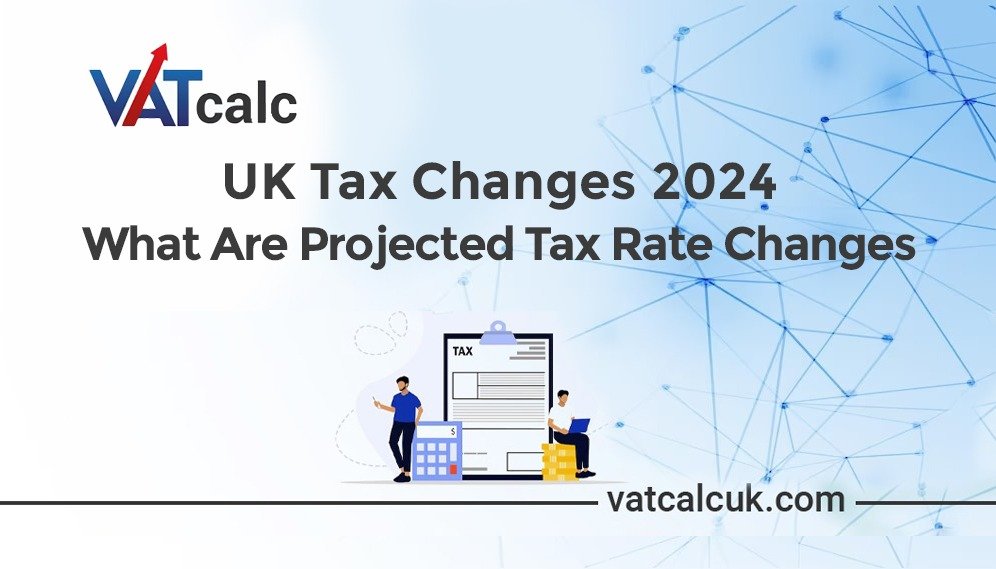
UK Tax Changes: As the proverbial curtains rise on the impending fiscal landscape of 2024, the United Kingdom stands at the threshold of a transformative era. The anticipated tax overhaul, set to unfold in the coming year, is a symphony of fiscal reforms that promise to reshape the financial terrain for individuals, corporations, and the broader economic spectrum. In this extensive exploration, we embark on a comprehensive journey to dissect and comprehend the multifaceted intricacies of the projected tax rate metamorphosis, peeling back layers to unveil the profound implications poised to resonate across the intricate tapestry of taxpayers. The orchestration of income tax reform serves as the overture to this fiscal symphony. The government’s vision to reconfigure income tax brackets is not a mere administrative adjustment; it is a harmonious endeavor aimed at creating an equitable and resilient distribution of the fiscal burden. To fully appreciate the significance of this transformation, a historical exploration is essential. Websites such as HM Revenue & Customs provide invaluable resources, offering insights into the evolution of income tax legislation over the years. The proposed restructuring prompts a deep dive into the historical context, the philosophical underpinnings of income tax, and the economic theories that have shaped its evolution. Economic scholars and enthusiasts alike can explore the digital archives of The National Archives, where a wealth of historical tax records and policy documents are stored. A nuanced understanding of the economic theories underpinning taxation, ranging from classical perspectives to modern economic thought, is essential. Resources from academic institutions and economic think tanks, such as the Institute for Fiscal Studies, can provide comprehensive insights. Furthermore, the implications for individuals necessitate a thorough examination of case studies and scenarios. Websites like Citizens Advice offer practical guidance, helping individuals navigate changes in income tax and understand their rights and responsibilities. Additionally, official publications from the Office for Budget Responsibility offer authoritative analyses, enabling a holistic understanding of how these adjustments resonate within the broader fabric of society. The ballet of fiscal transformation extends to the corporate stage, where corporate tax takes center stage in a choreography of strategic maneuvers. To unravel the complexities of this transformation, an exploration of the historical evolution of corporate taxation becomes essential. Websites such as the UK Parliament provide real-time access to proposed legislation, allowing stakeholders to stay informed about the latest developments. A meticulous recalibration of corporate tax rates signifies more than numerical adjustments; it embodies a strategic initiative to invigorate economic growth and fortify global competitiveness. Delving into economic theories on corporate taxation is facilitated by resources from academic institutions and economic research organizations such as the Centre for Business Taxation. The exploration extends to a macroeconomic lens, analyzing potential effects on employment, investment, and overall economic productivity. Websites like GOV.UK and The Treasury offer official publications and economic reports that provide a macroscopic view. Case studies of jurisdictions that have undergone similar corporate tax reforms offer valuable insights into potential outcomes. The Organisation for Economic Co-operation and Development (OECD) provides comparative analyses and global perspectives on tax policies. The confluence of fiscal rivers occurs in the realm of capital gains tax, where trajectories intersect with the currents of income tax. Understanding the nuances of this intersection requires a comprehensive examination of the historical evolution of capital gains tax. Websites such as Tax Research UK offer expert analyses and insights into contemporary tax issues. A deeper dive into economic theories surrounding capital gains taxation provides insights into the complex considerations that policymakers grapple with. Economic scholars can explore databases and research publications from institutions like the National Bureau of Economic Research (NBER) for cutting-edge research on taxation and its implications. Investors, akin to navigators charting a course through a tumultuous financial sea, find themselves compelled to meticulously monitor the ebb and flow of developments. Websites like Investopedia and Financial Times offer real-time market analyses and expert opinions. To grasp the practical implications, case studies of jurisdictions that have undergone similar reforms offer valuable insights into potential market dynamics. The World Bank provides comprehensive economic data, allowing for a nuanced understanding of global investment trends. The VAT system emerges as a crescendo in the symphony of economic transformation, subject to strategic refrains. Delving into the historical evolution of VAT and its integration into the broader tax framework unveils the intricate interplay between consumption taxes and economic dynamics. Websites such as EU Tax Observatory offer in-depth analyses of VAT policies and their implications. The theoretical underpinnings of VAT, including its incidence on consumers and producers, are integral to comprehending the potential ramifications of proposed changes. Economic models that analyze the elasticity of demand and supply in response to VAT adjustments can be explored through publications from institutions like the International Monetary Fund (IMF). Businesses engaged in cross-border trade, crucial stakeholders in the VAT landscape, must attune their senses to anticipate potential harmonies and dissonances. Websites like the International Chamber of Commerce (ICC) provide resources for businesses navigating international trade regulations. An exploration of international VAT regimes and case studies of jurisdictions that have undergone significant VAT reforms provide valuable benchmarks for understanding potential challenges and opportunities. In the realm of inheritance tax, the pendulum swings towards the artistry of fiscal transcendence. A comprehensive exploration of inheritance tax necessitates a historical journey through its evolution, analyzing key legislative acts and amendments. Websites such as The Guardian offer accessible explanations of complex tax issues, allowing individuals to stay informed about potential changes. The envisaged adjustments involve nuanced tinkering with tax thresholds, exemptions, and the very essence of inheritance tax architecture. Case studies of jurisdictions that have reformed their inheritance tax systems offer valuable insights into potential outcomes. Platforms like The Institute of Legacy Management provide resources for professionals in the field of estate planning, offering guidance on navigating changes in inheritance tax laws. Individuals actively engaged in estate planning must navigate this intricate dance with change, ensuring that their financial choreography remains in consonance with the evolving cadence of tax reforms. Practical guides and
2024 VAT changes: the law has been published!
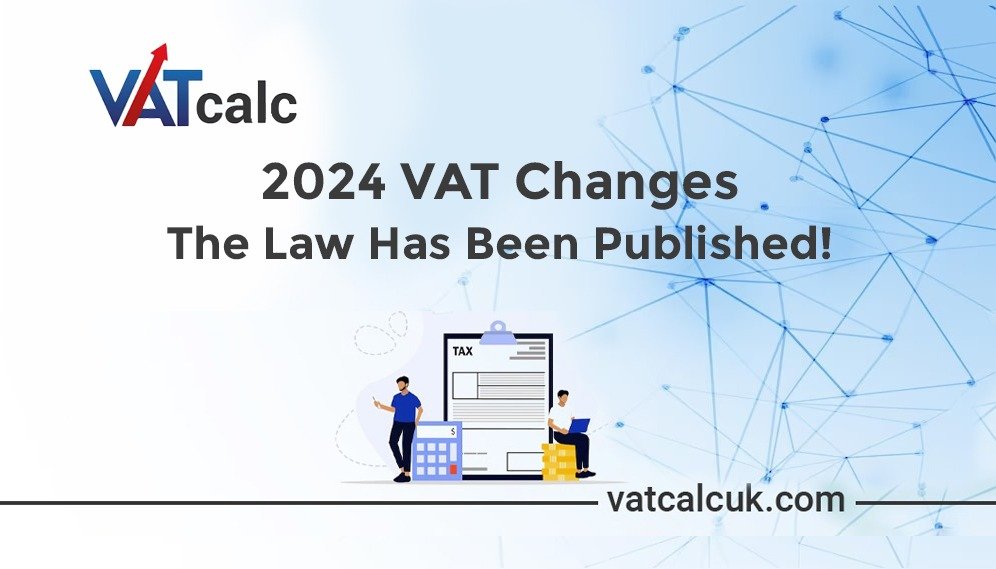
2024 VAT Changes: As the pages turn in the calendar, the United Kingdom’s business landscape stands on the threshold of a transformative period characterized by substantial changes in Value Added Tax (VAT) regulations. The eagerly awaited publication of the 2024 VAT changes has unveiled a comprehensive narrative, offering businesses an exhaustive guide outlining the intricate adjustments that lie ahead. This expansive exploration aims to delve even deeper into the multifaceted dimensions of these changes, providing businesses with a wealth of insights, strategic frameworks, and an extensive array of resources. The goal is not just to navigate compliance but to empower businesses to thrive in this dynamically evolving fiscal landscape. 1. Understanding the Nuances of the 2024 VAT Changes: The foundational step in navigating the 2024 VAT changes involves a meticulous examination of the intricacies embedded within these modifications. The official government page on VAT rates serves as an invaluable resource, offering a granular breakdown of alterations to rates, thresholds, and compliance requirements: HMRC VAT Changes. This resource acts as a compass for businesses seeking clarity on the specifics of the regulatory adjustments. To further enrich our understanding, businesses can explore interpretative documents released by HMRC to discern the intent behind specific changes. Investigating historical trends in VAT amendments may also provide insights into the potential trajectory of future changes, aiding businesses in adopting proactive strategies. 2. Impact on Small Businesses: Small and medium-sized enterprises (SMEs), being the backbone of the economy, often bear the brunt of regulatory changes. The Federation of Small Businesses (FSB) stands as a reliable ally for small business owners seeking guidance and support: FSB. In this expansive exploration, we will delve into the nuanced ways the 2024 VAT changes might impact SMEs, providing not only a comprehensive understanding of the challenges but also actionable strategies to navigate these changes seamlessly. Beyond official resources, active participation in industry-specific forums and communities can provide SMEs with real-world insights and practical advice from peers who are navigating similar challenges. Platforms like LinkedIn groups and industry forums offer collaborative spaces for SMEs to share experiences, exchange strategies, and collectively address challenges. A detailed examination of sector-specific SME associations, such as those catering to retail, manufacturing, or service industries, can provide tailored insights into how businesses within a particular sector can strategize and adapt to the changes. Engaging with sector-specific publications and attending industry-specific webinars can provide SMEs with a holistic perspective on the challenges and opportunities presented by the 2024 VAT changes. 3. E-Commerce and International Trade Implications: The evolution of e-commerce and the expanding landscape of international trade have redefined the contours of the business world. Against this backdrop, understanding how the 2024 VAT changes influence cross-border transactions becomes paramount. The official government guidance on VAT for businesses trading internationally is accessible here: VAT for businesses trading internationally. Delving into the intricacies of international VAT regulations necessitates a comprehensive approach. Exploring case studies, success stories, and potential challenges faced by businesses engaged in global trade can provide valuable insights. Additionally, staying closely connected with international trade associations and organizations enhances access to timely information and best practices. To further enrich their understanding, businesses can explore academic research articles and journals focused on international taxation and the impact of VAT changes on cross-border commerce. Engaging with thought leaders in the field through webinars and conferences can provide a forward-looking perspective on how international trade dynamics may evolve in the wake of these changes. 4. Leveraging Technology for VAT Compliance: The digital era presents a vast array of technological solutions to streamline VAT processes. Businesses can explore advanced VAT automation tools offered by companies such as Avalara and Vertex: Avalara, Vertex. These solutions not only simplify compliance tasks but also mitigate the risk of errors, enabling businesses to redirect their focus toward strategic growth initiatives. As technology continues its rapid evolution, staying abreast of the latest developments in VAT software and automation tools is essential. Regularly assessing the market for emerging technologies ensures that businesses can leverage the most efficient and effective solutions available. A more profound exploration involves delving into case studies of businesses that have successfully integrated advanced VAT automation tools into their operations. Analyzing the challenges they faced, the benefits reaped, and the lessons learned can provide actionable insights for businesses at different stages of technological adoption. Additionally, businesses can explore emerging technologies such as blockchain, artificial intelligence, and machine learning to anticipate how these innovations may impact VAT compliance in the future. Collaborating with technology experts and attending technology-focused conferences can offer businesses a glimpse into the future of VAT compliance. 5. Consulting with Tax Professionals: The complexity inherent in the 2024 VAT changes necessitates expert guidance. Seeking advice from tax professionals ensures that businesses possess a nuanced understanding of the implications and can develop robust strategies for compliance. Reputable tax consulting firms such as Deloitte and PwC offer comprehensive tax advisory services: Deloitte, PwC. Establishing a collaborative relationship with tax professionals goes beyond mere compliance. It opens avenues for proactive strategic planning, risk mitigation, and staying ahead of future regulatory changes. Tax professionals can provide bespoke advice tailored to the specific needs and goals of each business. Businesses can further enhance their collaboration with tax professionals by participating in industry-specific workshops and seminars organized by these firms. Engaging in direct dialogues with tax experts can provide a deeper understanding of the intricacies of the VAT changes and how businesses can navigate them effectively. Additionally, businesses can explore opportunities for continuous education for their finance and tax teams. Encouraging team members to pursue relevant certifications and attend industry conferences can contribute to building in-house expertise in VAT compliance. 6. The Macro-Economic Impact of VAT Changes: Beyond the microcosm of individual businesses, the 2024 VAT changes are poised to have a macroeconomic impact. Exploring the broader economic implications, such as changes in consumer behavior, market dynamics, and overall industry trends, is crucial for businesses to anticipate and adapt to the evolving landscape. Businesses can delve into economic
Understanding the Implications of the Children’s Clothing (Value Added Tax) Bill 2023-24 in the UK

Children’s Clothing (Value Added Tax): The Children’s Clothing (Value Added Tax) Bill for the fiscal year 2023-24 has emerged as a pivotal legislative initiative within the United Kingdom, sparking discussions across various sectors. Aimed at restructuring the tax landscape for children’s clothing, this bill carries significant implications for both consumers and businesses. In this extensive exploration, we will dissect the multifaceted aspects of the bill, delving into its historical context, potential benefits and concerns, global comparisons, public discourse, and future economic projections. 1. Overview of the Children’s Clothing (Value Added Tax) Bill: At its core, the Children’s Clothing (Value Added Tax) Bill represents a targeted effort to address the existing taxation framework surrounding children’s apparel. The proposed amendments seek to redefine the VAT structure specifically for clothing designed for children. To gain a nuanced understanding of the bill and its intricate provisions, stakeholders are encouraged to explore the official UK government website dedicated to the Children’s Clothing (Value Added Tax) Bill 2023-24. Link: Children’s Clothing (Value Added Tax) Bill 2023-24. 2. Consumer Perspectives: The implications of this bill have a direct and profound impact on the daily lives of parents and guardians. As consumers, they find themselves at the crossroads of potential financial relief and the need for comprehensive understanding. The prospect of a reduction in VAT on children’s clothing is promising, as it could potentially translate into more accessible and affordable options for families across the UK. To engage with the consumer pulse and delve into insightful discussions, parents can turn to online parenting forums. Platforms such as Netmums and Mumsnet provide valuable spaces for sharing experiences and gaining insights into the collective sentiments surrounding this pivotal bill. Understanding the specific needs and expectations of consumers requires an examination of historical trends in children’s clothing purchases. A comprehensive analysis of past consumer behaviors, trends, and spending patterns can provide context to the potential impact of the Children’s Clothing (Value Added Tax) Bill on household budgets. 3. Business Implications: Within the intricate web of the children’s clothing industry, retailers and manufacturers are closely monitoring the trajectory of the bill. The proposed changes in VAT have the potential to ripple through various aspects of business operations, from pricing strategies to inventory management. A profound understanding of the bill’s implications becomes imperative for businesses to not only adapt but also to thrive in the evolving market landscape. Industry stakeholders seeking real-time updates and diverse perspectives can turn to reputable business news websites. Platforms such as BBC Business and Financial Times offer comprehensive coverage and analysis, shedding light on the potential shifts and challenges that lie ahead. For a more in-depth exploration of business implications, it is crucial to consider historical cases where changes in taxation significantly influenced industry practices. This examination can provide valuable insights into how businesses adapted to similar legislative changes and the resultant impacts on market dynamics. 4. Potential Benefits and Concerns: While the bill holds the promise of economic relief for families, it’s crucial to acknowledge the nuanced landscape of potential benefits and concerns. The reduction in VAT, if implemented judiciously, could alleviate financial burdens for parents and stimulate spending within the children’s clothing sector. However, a comprehensive analysis is required to identify and address potential loopholes and unintended consequences that may arise. For a more profound dive into the complexities associated with the bill, individuals can explore reputable commentary websites such as The Conversation and The Guardian Opinion. 5. Historical Context and Global Comparisons: To gain a holistic perspective on the Children’s Clothing (Value Added Tax) Bill, it’s valuable to explore the historical context of tax reforms in the UK. Additionally, drawing comparisons with similar initiatives globally can offer insights into the potential long-term effects and challenges associated with such legislative changes. Exploring historical trends can be accomplished by referring to academic resources, historical tax data, and economic journals. Comparative analyses may involve examining the tax structures of countries that have undergone similar reforms, providing a broader context for understanding potential outcomes. Historical comparisons can be further extended to include analyses of how other sectors responded to tax reforms. Understanding the lessons learned from historical cases can help in predicting potential challenges and opportunities that the children’s clothing industry may face. 6. Public Discourse and Advocacy: As the bill progresses, it’s vital to gauge the level of public discourse and advocacy surrounding it. Engaging with public opinions, expert analyses, and advocacy campaigns can provide a deeper understanding of the societal implications of the proposed changes. Social media platforms, community meetings, and public forums are rich sources of diverse perspectives that contribute to the broader narrative. For an inclusive understanding of public sentiments, exploring social media platforms such as Twitter, Facebook, and LinkedIn can provide a real-time pulse of discussions surrounding the Children’s Clothing (Value Added Tax) Bill. The examination of public discourse can be extended to include analyses of how various demographic groups are responding to the bill. Understanding the nuances of different perspectives within society can shed light on potential areas of contention or agreement. 7. Future Projections and Economic Models: Beyond the immediate impact, it’s valuable to explore future projections and potential economic models that may emerge as a result of the bill. Economic analysts and scholars can contribute valuable insights into potential shifts in consumer behavior, market dynamics, and the overall economic landscape. Exploring various economic models, from Keynesian to supply-side economics, can shed light on potential scenarios that may unfold in the wake of the proposed changes. Referencing academic journals, economic publications, and expert interviews can provide a nuanced understanding of the potential long-term effects of the Children’s Clothing (Value Added Tax) Bill. Future projections can also be examined through scenario planning, where potential outcomes are mapped based on different sets of assumptions. This can provide a more comprehensive understanding of the range of possibilities that may unfold. Conclusion: In conclusion, the Children’s Clothing (Value Added Tax) Bill for 2023-24 is undeniably a transformative development that demands nuanced consideration from all stakeholders.
